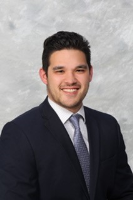Tympanoplasty (Revision)
Main Text
Table of Contents
The tympanic membrane (eardrum) acts as a protective barrier between the middle and external ear, guarding the middle ear against infection. Additionally, it plays a crucial role in hearing by facilitating impedance matching between the air in the external canal and the fluid in the inner ear. Disruption of the tympanic membrane can lead to hearing loss, recurrent infections, and ear drainage. Common etiologies of perforations include infection and trauma. When perforations persist and cause symptomatic hearing loss or recurrent infections, surgical repair by an otolaryngologist becomes necessary. Although primary tympanoplasty has high success rates (75–95%), failures can complicate subsequent repair attempts. In this case study, we present a 61-year-old female who underwent two prior tympanoplasties without success. Dr. Cunningham demonstrates intraoperative decision-making and surgical techniques for repair in challenging cases.
Reconstruction; perforation; tympanic membrane; lateral; underlay.
The tympanic membrane (TM) serves as a delicate, membranous barrier that transmits sound vibrations, along with the ossicles, from the external ear to the inner ear. Traumatic tympanoplasty occurs at an incidence rate of 6.8 per 1000 persons.1 Patients with TM perforations often present with symptoms such as hearing loss, earache, tinnitus, otorrhea, and vertigo.2
Our patient is a 61-year-old female with a significant medical history, including left-sided mastoidectomy and two prior tympanoplasties. She sought revision surgery for a traumatic left-sided anterior marginal TM perforation. Although her initial tympanoplasty was successful, subsequent trauma led to a perforation that resisted surgical correction.
When evaluating a patient with suspected traumatic TM perforation, a thorough examination is crucial. Begin by inspecting the auricle and using otoscopy to assess the TM and external auditory canal for signs of air-fluid levels, erythema, or obvious perforations. In this case, the patient presented with a large anterior marginal TM perforation visible on otoscopy, extending to the level of the annulus. Pneumatic otoscopy can aid in diagnosis when perforations are unclear, but caution is necessary to prevent air from entering the otic capsule and causing neurologic symptoms. Additionally, baseline hearing testing with tuning forks can identify any accompanying conductive hearing loss. Given the evident perforation, a lateral graft-type tympanoplasty was indicated for TM reconstruction.
The utilization of CT imaging is advised selectively to minimize unnecessary irradiation. Patients with basilar skull fractures, significant middle ear trauma, or facial nerve dysfunction are typically candidates for further imaging. In our patient’s case, a complex surgical history involving two prior tympanoplasties and a mastoidectomy raises the possibility of anatomical distortions that could impact the surgical approach. Therefore, prudent clinical judgment should guide decisions regarding additional imaging beyond established recommendations.
The success rates for subtotal and total tympanic membrane perforation repair using lateral grafting are excellent overall. Jung and Park reported a 97% success rate in a series of 100 patients utilizing a mediolateral graft technique, while Angeli et al. observed a 98% success rate in 46 patients with total or near-total perforations.3,4 However, revision tympanoplasties exhibit a higher incidence of tympanosclerosis, ossicle adhesions, erosions, and fixations, which can complicate repair and necessitate enhanced technical precision.5
A recent large prospective study investigating outcomes in primary and revision tympanoplasties among adults with perforations exceeding 50% of the TM found graft success rates of 78.2% for revision tympanoplasty compared to 96.6% for primary tympanoplasty (p=0.001).6 Notably, hearing outcomes did not significantly differ between the two groups. It is important to acknowledge the considerable heterogeneity in the current literature reporting grafting success in revision tympanoplasties, emphasizing the need for larger cohort studies to accurately assess outcomes.
Spontaneous healing in traumatic perforations depends largely on the perforation size and underlying cause.7 Saliba’s subdivision provides a useful classification based on TM size (in percentage) and the affected quadrant.8 For instance, a “small” perforation (Grade I) is defined as less than 25% in size and affecting less than one quadrant. Sayin et al. found that 94.8% of Grade I perforations spontaneously closed, and interestingly, 77% of Grade II injuries also closed spontaneously.9
When spontaneous healing does not occur within 2 months of the inciting event or in cases of posterosuperior perforations, surgical repair becomes necessary.2 The debate surrounding wet (serosanguinous otorrhea) versus dry conditions and their impact on surgical outcomes has been ongoing. While the common perception was that a wet ear might increase infection risk and hinder postoperative healing, recent studies have shown either insignificant differences or even accelerated healing in wet conditions compared to dry conditions.10,7 Lou et al. proposed mechanisms to explain the varying healing patterns over time in wet and dry conditions, emphasizing granulation tissue formation and epithelial migration.7
The lateral graft tympanoplasty, also known as the overlay graft technique, was originally developed by Sheehy and Glasscock.11 This procedure involves removing the epithelium from the eardrum and placing a graft—commonly perichondrium or temporalis fascia—over the eardrum. In the lateral graft technique, the graft is inserted laterally to the annulus, allowing exposure of the middle ear and the anterior meatal recess. This exposure is critical for repairing large, anterior perforations.12
In contrast, the standard underlay technique positions the graft medial to the malleus, but it does not provide adequate visualization of the middle ear. Consequently, it is suboptimal for repairing the perforation described in this case. The overlay technique, on the other hand, has demonstrated success in patients with total or near-total tympanic membrane perforations.13
In our present case, the preoperative examination revealed a large anterior perforation and scarce residual tympanic membrane tissue. As a result, the standard underlay graft tympanoplasty was not the preferred approach. Instead, we opted for a lateral graft tympanoplasty.
Typically, native temporal fascia serves as the graft material for tympanoplasty, harvested via an endaural, retroauricular approach. However, in revision cases, cartilage grafts have demonstrated greater robustness against poor vascular supply and resistance to infections.14 In our specific case, due to a lack of harvestable tissue resulting from the patient’s prior surgical history, we opted for a premade collagen graft sourced from porcine intestinal submucosa. This approach offers advantages, as using an external graft minimizes the potential morbidity associated with native fascia harvest. Although less commonly utilized, this type of graft yields success rates equivalent to standard grafts. A recent study involving seventy-two patients who underwent endoscopic tympanoplasty with a porcine small intestine submucosal graft reported a 94.7% success rate in perforation closure, with no immune reactions to the graft.15
Contraindications to the lateral graft technique are minimal but include active middle ear infection.
Tympanoplasty involves repairing the tympanic membrane with or without reconstructing the middle ear bones.16 While primary tympanoplasty generally boasts high success rates, cases requiring revision due to failed primary repair encounter challenges. Active inflammatory changes, characterized by excessive mucous membrane proliferation and hypertrophy (mucosalization), significantly diminish the success rate of grafting.17 Additionally, tympanosclerosis and ossicular changes are more prevalent in revision cases (63.4%) compared to primary tympanoplasty (29.5%). These pathologic alterations further complicate successful grafting.
The Wullner classification, first published in 1956, remains well-known. It describes the extent of damage within the middle ear and outlines the reconstruction method. Despite subsequent classifications, there is no universally accepted international standard.18
In revision tympanoplasty, successful repair hinges on real-time decision-making due to the likelihood of distorted anatomy and inflammatory changes that can swiftly alter the predetermined surgical approach. This case underscores the critical importance of familiarity with multiple techniques for achieving success in such complex scenarios.
During surgery, we encountered unexpected challenges. Dehiscence of the annulus became apparent while separating the anterior canal wall skin from the underlying periosteum to facilitate lateral graft placement. This dehiscence complicated skin removal from the annulus, resulting in unavoidable damage. Additionally, extensive mucosalization of the canal rendered the skin friable, preventing complete detachment from the canal wall and hindering lateral grafting.
Given these intraoperative findings, we made informed decisions. Despite the potential for compromised healing, we opted for a large underlay graft—a technique that avoids the anterior canal’s highly mucosalized environment. Furthermore, we observed resorption of a portion of the posterior canal, likely due to inflammation. To reconstruct the canal, we harvested a small cymbal cartilage graft. Grooves were meticulously created in the posterior canal wall bone using a diamond burr, anchoring the cartilage graft effectively.
Ultimately, the unexpected challenges led us to adapt our approach. We transitioned to a hybrid underlay graft technique and performed an unanticipated reconstruction of the posterior canal wall. This case underscores the need for sound decision-making and technical flexibility in revision tympanoplasties.
Author C. Scott Brown also works as editor of the Otolaryngology section of the Journal of Medical Insight.
The patient referred to in this video article has given their informed consent to be filmed and is aware that information and images will be published online.
References
- Wahid FI, Nagra SR. Incidence and characteristics of traumatic tympanic membrane perforation. Pak J Med Sci. 2018; 34(5):1099-1103. doi:10.12669/pjms.345.15300.
- Dolhi N, Weimer A. Tympanic Membrane Perforations. [Updated 2020 Nov 19]. In: StatPearls [Internet]. Treasure Island (FL): StatPearls Publishing; 2021 Jan. Available at: https://www.ncbi.nlm.nih.gov/books/NBK557887/.
- Jung T, Park S. Mediolateral graft tympanoplasty for anterior or subtotal tympanic membrane perforation. Otolaryngol Head Neck Surg. 2005; 132:532-536. doi:10.1016/j.otohns.2004.10.018.
- Angeli S, Kulak J, Guzmán, J. Lateral tympanoplasty for total or near-total perforation: prognostic factors. Laryngoscope. 2006; 116:1594-1599. doi:10.1097/01.mlg.0000232495.77308.46.
- Lesinskas E, Stankeviciute V. Results of revision tympanoplasty for chronic non-cholesteatomatous otitis media. Otolaryngol Head Neck Surg. 2011; 38(2):196-202. doi:10.1016/j.anl.2010.07.010.
- Faramarzi M, Shishegar M, Tofighi SR, et al. Comparison of grafting success rate and hearing outcomes between primary and revision tympanoplasties. Iran J Otorhinolaryngol. 2019;31(102):11-17.
- Lou Z, Tang Y, Yang J. A prospective study evaluating spontaneous healing of aetiology, size and type-different groups of traumatic tympanic membrane perforation. Clin Otolaryngol. 2011; 36(5):450-460. doi:10.1111/j.1749-4486.2011.02387.x.
- Saliba I. Hyaluronic acid fat graft myringoplasty: how we do it. Clin Otolaryngol. 2008;33(6):610-614. doi:10.1111/j.1749-4486.2008.01823.x.
- Sayin I, Kaya KH, Ekizoglu O, et al. A prospective controlled trial comparing spontaneous closure and Epifilm patching in traumatic tympanic membrane perforations. Eur Arch Otorhinolarygol. 2013;270:2857-2863.
- Naderpour M, Shahidi N, Hemmatjoo T. Comparison of tympanoplasty results in dry and wet ears. Iran J Otorhinolaryngol. 2016;28(86):209-214.
- Sheehy JL, Glasscock ME III. Tympanic membrane grafting with temporalis fascia. Arch Otolaryngol. 1967 Oct;86(4):391-402. doi:10.1001/archotol.1967.00760050393008.
- Sergi B, Galli J, De Corso E, Parrilla C, Paludetti G. Overlay versus underlay myringoplasty: report of outcomes considering closure of perforation and hearing function. Acta Otorhinolaryngol Ital. 2011;31(6):366-371.
- Wick C, Arnaoutakis D, Kaul V, et al. Endoscopic lateral cartilage graft tympanoplasty. Otolaryngol Head Neck Surg. 2017; 157(4):683-689. doi:10.1177/0194599817709436.
- Ali Bayram, Nuray Bayar Muluk, Cemal Cingi, Sameer Ali Bafaqeeh. Success rates for various graft materials in tympanoplasty – a review. J Otol. 2020; 15(3):107-111. doi:10.1016/j.joto.2020.01.001.
- Chen C, Hsieh L. Clinical outcome of exclusive endoscopic tympanoplasty with porcine small intestine submucosa in 72 patients. Clin Otolaryngol. 2020; 45(6):938-943. doi.org/10.1111/coa.13607.
- Fishman AJ, Mierzwinski J. Myringoplasty/Tympanoplasty, Zone-Based Approach and Total Tympanic Membrane Reconstruction (TTMR). In: Kountakis SE, eds. Encyclopedia of Otolaryngology, Head and Neck Surgery. Springer; 2013. doi.org/10.1007/978-3-642-23499-6_68.
- Sahan M, Derin S, Deveer M, et al. Factors affecting success and results of cartilage-perichondrium island graft in revision tympanoplasty. J Int Adv Otol. 2014; 10(1): 64-67. doi:10.5152/iao.2014.014.
- Merkus P, Kemp P, Ziylan F, et al. Classifications of mastoid and middle ear surgery: a scoping review. J Int Adv Otol. 2018; 14(2):227-232. doi:10.5152/iao.2018.5570.
Cite this article
Brown CS, Carsel AJ, Cunningham CD III. Tympanoplasty (revision). J Med Insight. 2024;2024(203). doi:10.24296/jomi/203.



